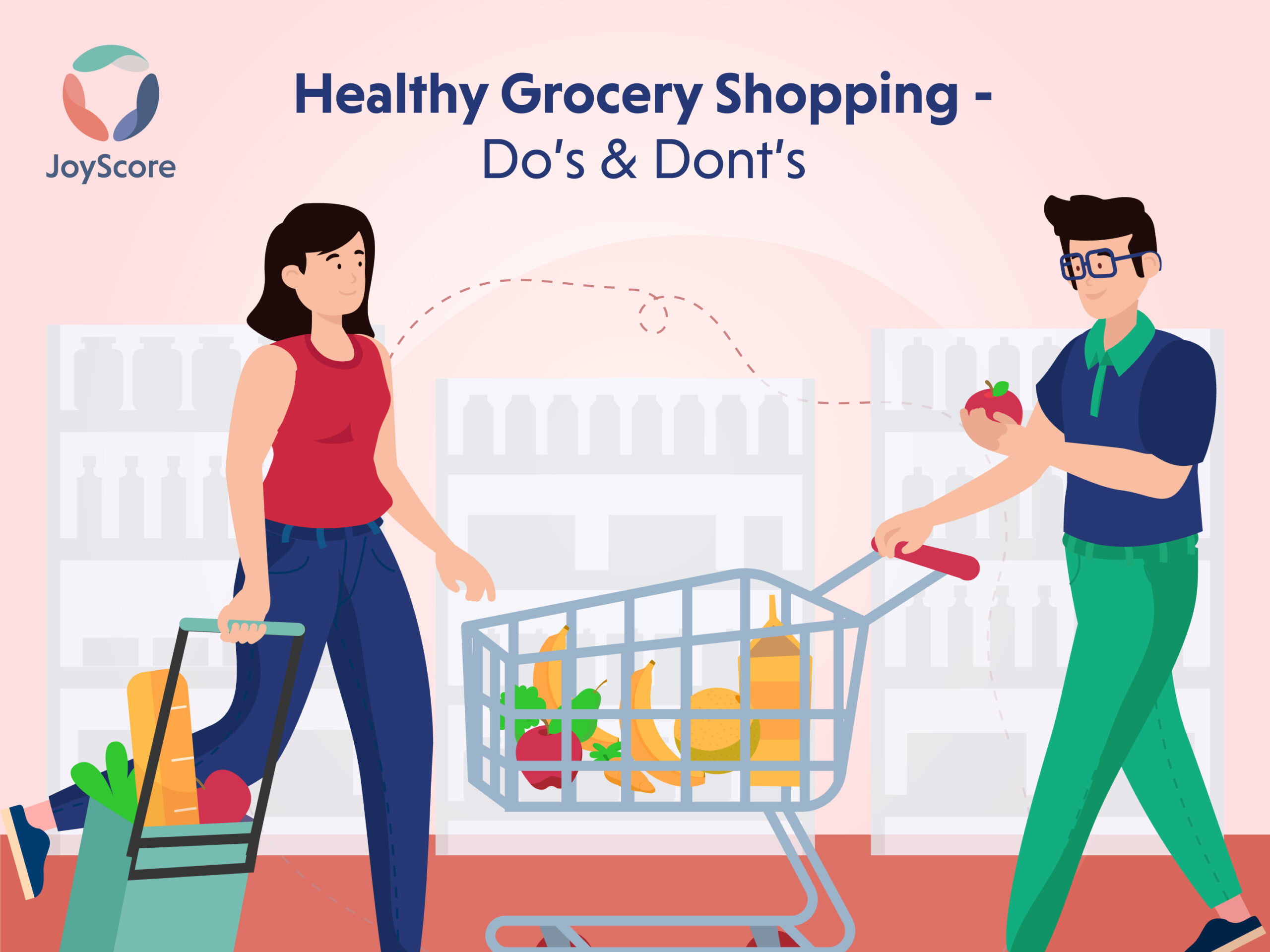Tips for Healthy Grocery Shopping
If you are a health-conscious person and even bothered about your family member’s dietary regime, then being a healthy grocery shopping pro is a must. Your awareness while shopping for your grocery or ‘your household food purchase behaviour’ will decide what enters your kitchen and what will be served to you and your family.
When you pay a visit to your supermarket for your weekly grocery shopping, the food items you add to your cart play an important role in managing your diet quality, so be mindful of what you pick from the store’s shelf.
There should be a certain plan before you plan your supermarket tour.
- BE READY WITH YOUR GROCERY LIST
You must have a detailed list of items you will be purchasing. We live in an era where you can make access your food shopping list with ease on your smartphone. Here is a quick guide to making your next improvised grocery list with measured DO’S and DON’T to improve the food environment at home.

DO’S
- Visit your kitchen shelves and pantry.
This will give you a clear view of what you need and what is already stocked in bulk. I will help you avoid food wastage and plan your meals more accurately.
- Plan your weekly menu
This is an effective method to assist you in promoting your healthy eating habits so that you will be shopping for the ingredients needed.
- Cater to your family’s taste pallets and preferences
Our house consists of individuals with various dietary behaviours per their lifestyles and consumption pattern.
For instance, older adults must consume an average of 2000calories per day. Thus, you need to be more mindful to include ingredients from all food groups and maintain healthy equity. Whereas, for younger adults, observational studies report that a good body mass index can be achieved by avoiding unhealthy options like sugar, sweeteners, beverages, starchy foods, etc.
- Budget planning
Researching about price variables for your grocery list items pre hand saves your time and effort and makes your grocery shopping more efficient. You may use applications online to make your list more convenient.
DON’TS
- Avoid keeping it until the last minute. An unplanned trip may leave you missing healthy options.
- Don’t mix your household shopping with your food shopping. This will keep you more focused on the quality and quantity of your dietary needs.
- Don’t make a messy, cluttered grocery list. It should be accessible to yourself first.
- PLANNING YOUR PURCHASING
A myth has been created for every shopper that the outer aisles are the only ones accommodating the healthy options. But this is not a true belief. You may also find food with nutritious values in the middle aisles. Although unhealthy options like processed snacks, sodas, candies, and refined grains are mostly available here, you may surely find some nutrient-dense foods.
DO’S
- Start with outer aisles.
One can begin the shopping by buying fresh veggies, fruits, whole grains, fish, dairy, and meat, all accessible in the outer aisles. Now you can aim towards the middle section of the store where other healthy options like frozen fruits and vegetables, canned and dry food items, and instant food can be picked.
- Shop for frozen and canned food
Some every day and healthy items you may find in this section are edamame, quinoa, frozen berries, diced tomatoes, coconut milk, baby corns, olive, peas, meat, and fish. Buying frozen and canned food will help you avoid food waste and frequent trips to the supermarket.
One must always look for canned items packed in water instead of oil.
- Opt for seasonal fruits and vegetables
When you want to stick to your budget and avoid food from storage with added preservatives and low nutrient content, this becomes an essential decision.
- Buying grains and bread
Give an overview to the ingredient list before adding the food item to your cart. This list must include whole grains first instead of multigrain or enriched flour. More intake of fibrous food will upgrade your family’s diet quality and nutrition. This type of nutritional application will help avoid problems like obesity, high blood pressure, or hypertension in older and younger adults.
- Don’t opt for perishable products in bulk.
- Use your smartphone for arithmetic calculations and gain value for money.
DON’TS
- Don’t go starving
Take a short meal before you step out of your house to shop. It will keep you calm and pull you back to avoid making hasty decisions while shopping. Snacking up on a protein bar or a healthy drink may also prove helpful and not let you regret impulsive shopping.
- Don’t be ravenous
A supermarket is a place attracting its customers with its promotional schemes to improve its sales. Thus, weekly sales circulars, store flyers, and price promotions must be seen. Therefore, stick to your household food purchase behavior.
The extra dollars you will spend on a bulk deal will give you only regrets after you find them lying in your shelf for months with no use.
- Clearance sales should not be looked for
- Don’t look for brands
Healthy foods are not those labeled ‘organic’. Again you must read the ingredient lists of packed food items and avoid buying foods with a long list of unfamiliar foods. Instead, go for generic brands.
- Avoid small packs of snacks and ready-to-eat items.
Important point
New and delicious goodies in every corner of your store and billing counter are the most alluring for your kids. Avoid being driven into that trap.
3. MIND MAP YOUR NUTRITIONAL MIND
Remain focused while shopping in the store. It would be preferable to leave your kids at home and make your purchasing healthy and quick.
DO’S
Healthy food groups which are essential as follows:
- Fruits, e.g., organic banana, kiwi, avocado, apples, etc.
- Proteins rich foods are of two types.
- Proteins are derived from plants, such as beans, peas, lentils, and nuts.
- Animal-based proteins such as meat, fish, eggs
Always prefer proteins from plants sources
- Grains and legumes, e.g., oats, brown rice, black beans, lentils
- Starchy vegetables such as sweet potatoes, potatoes, etc.

DON’TS
- Don’t buy fruits that contain high fructose levels and products with added sugars to avoid future possibilities of obesity, and type 2 diabetes mellitus that will consequently end up in cardiovascular disease.
- Avoid food products with high sodium levels and unsaturated fats.
- Sugar-sweetened beverages are to be replaced with natural drinks such as coconut water, kombucha, or other unsweetened beverages. An individual must consume less than six gms of added sugar per serving.
- Avoid highly refined foods.
- Canned fruits are without added sugars, syrups, sweeteners, and meat and veggies with no added salts or low sodium.
- Frozen foods are preferred over canned food because of their low sodium levels.
Download on the Appstore
Get it on Google Play



